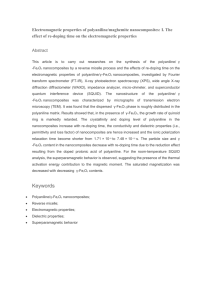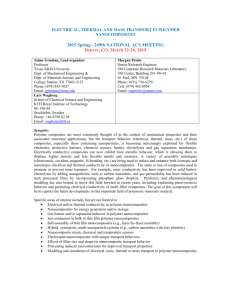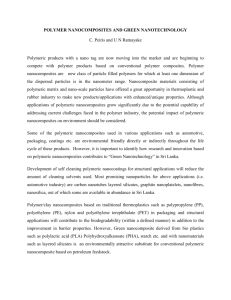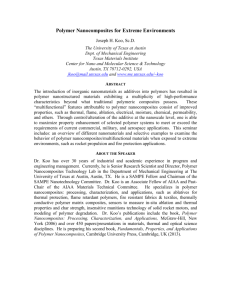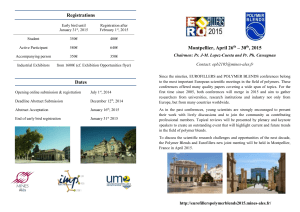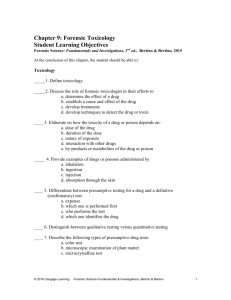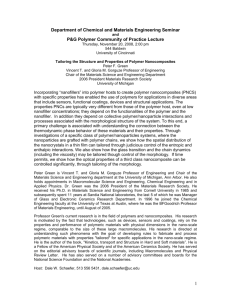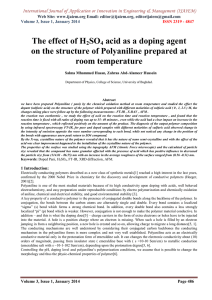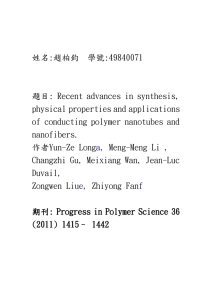One-Step Conducting Polymer Nanocomposites
advertisement
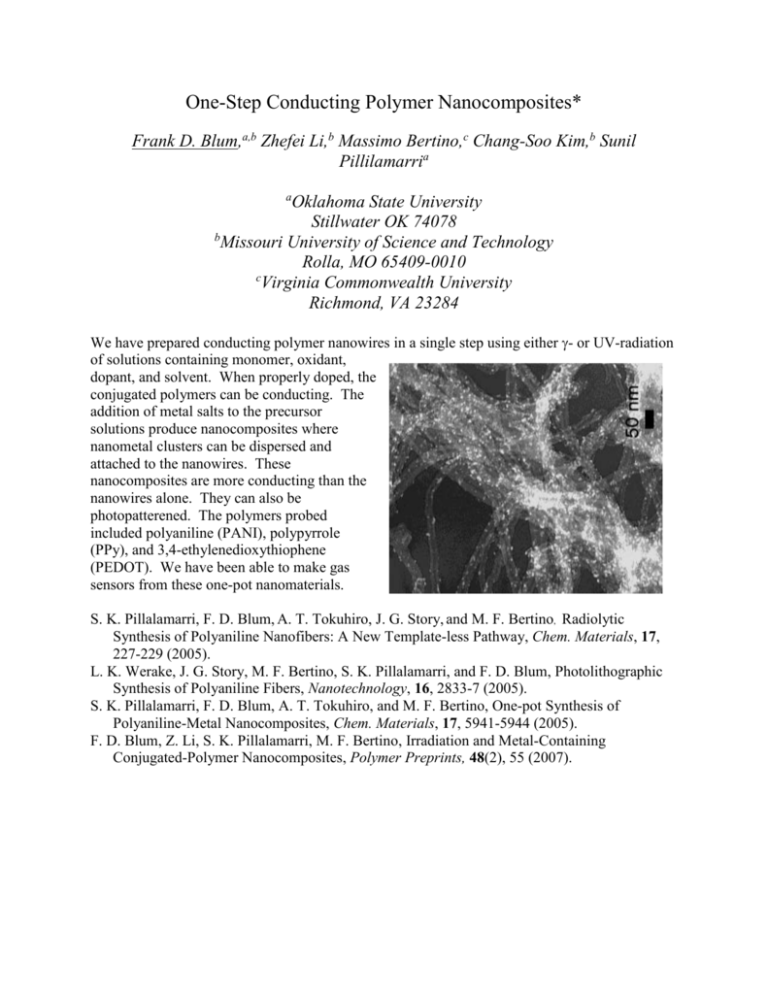
One-Step Conducting Polymer Nanocomposites* Frank D. Blum,a,b Zhefei Li,b Massimo Bertino,c Chang-Soo Kim,b Sunil Pillilamarria a Oklahoma State University Stillwater OK 74078 b Missouri University of Science and Technology Rolla, MO 65409-0010 c Virginia Commonwealth University Richmond, VA 23284 We have prepared conducting polymer nanowires in a single step using either - or UV-radiation of solutions containing monomer, oxidant, dopant, and solvent. When properly doped, the conjugated polymers can be conducting. The addition of metal salts to the precursor solutions produce nanocomposites where nanometal clusters can be dispersed and attached to the nanowires. These nanocomposites are more conducting than the nanowires alone. They can also be photopatterened. The polymers probed included polyaniline (PANI), polypyrrole (PPy), and 3,4-ethylenedioxythiophene (PEDOT). We have been able to make gas sensors from these one-pot nanomaterials. S. K. Pillalamarri, F. D. Blum, A. T. Tokuhiro, J. G. Story, and M. F. Bertino, Radiolytic Synthesis of Polyaniline Nanofibers: A New Template-less Pathway, Chem. Materials, 17, 227-229 (2005). L. K. Werake, J. G. Story, M. F. Bertino, S. K. Pillalamarri, and F. D. Blum, Photolithographic Synthesis of Polyaniline Fibers, Nanotechnology, 16, 2833-7 (2005). S. K. Pillalamarri, F. D. Blum, A. T. Tokuhiro, and M. F. Bertino, One-pot Synthesis of Polyaniline-Metal Nanocomposites, Chem. Materials, 17, 5941-5944 (2005). F. D. Blum, Z. Li, S. K. Pillalamarri, M. F. Bertino, Irradiation and Metal-Containing Conjugated-Polymer Nanocomposites, Polymer Preprints, 48(2), 55 (2007).
